CLAY VESSELS DESIGNED TO NATURALLY FERMENT AND PRESERVE FOOD IN OPTIMUM CONDITION
Korean cuisine is the epitome of slow food, which focuses on conforming to the laws of nature. At its core is the science of fermentation, a process in which natural microorganisms (such as lactic acid bacteria) break down sugar into health-benefiting acid in accordance with the timeline set by nature, making food more nutritious and tasty.
DOK, AN ESSENTIAL TOOL FOR NATURAL FERMENTATION
Kimchi is one of the most well-known fermented dishes of Korean cuisine. Ganjang (soy sauce), doenjang (soybean paste), and gochujang (red chili paste), which are added to most dishes, are condiments made by fermenting soybean. Traditional liquors, jeotgal (salted seafood), and jangajji (pickled vegetables) also undergo fermentation. In short, Korean cuisine is perfected through fermentation, and fermentation is enabled by a vessel called dok. A dok is first shaped with clay, then covered with lye, and finally baked in a kiln. Also called onggi (earthen pots), ojigeureut (crocks), and hangari (jars), these clay vessels have invisible breathing holes through which air penetrates to allow fermentation. It prevents food from going stale by letting in air while retaining moisture. This is why earthenware is often referred to as “breathing vessels.”
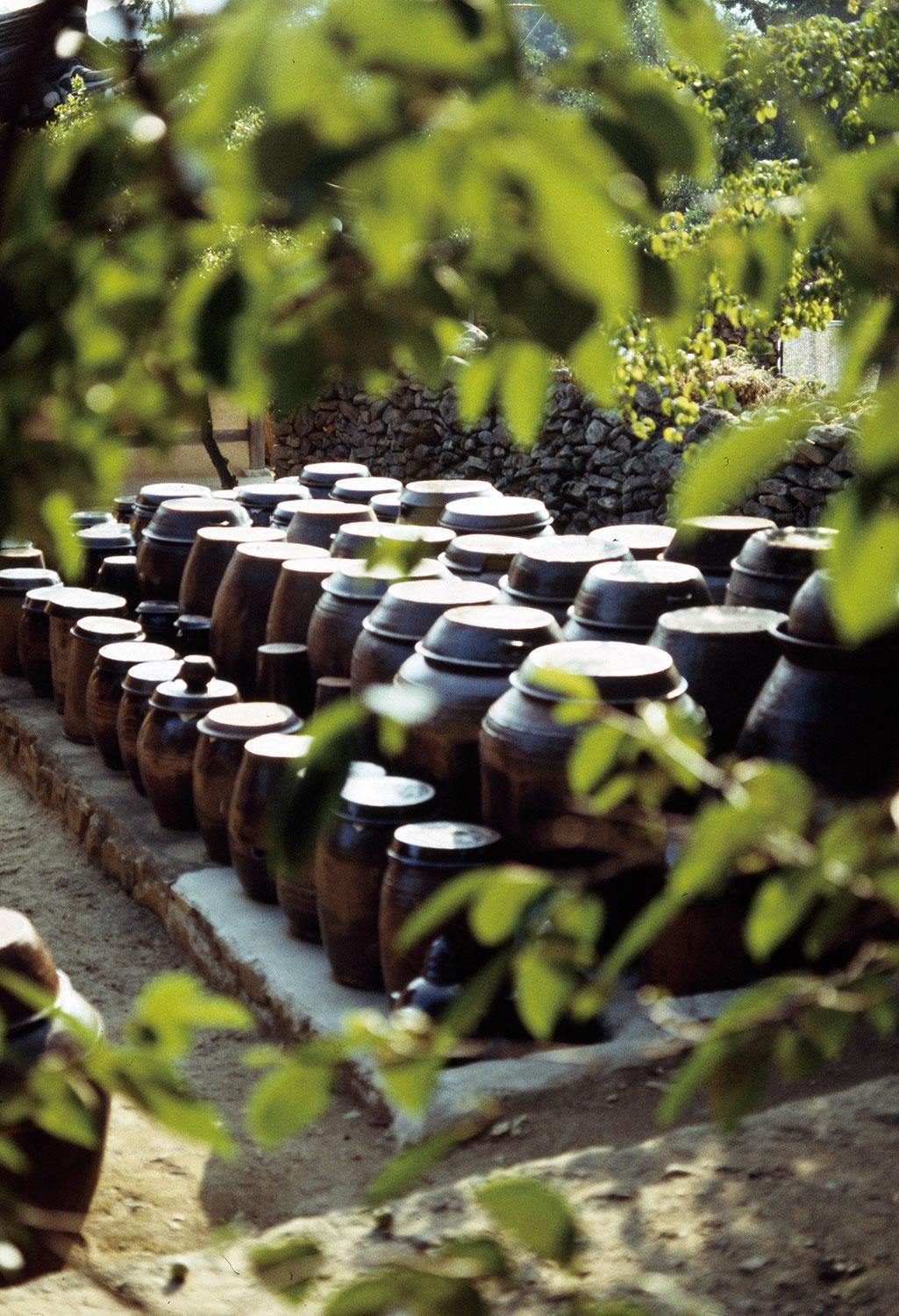
JANG, THE PRIDE OF KOREAN WOMEN
In the olden days, Korean housewives made it their utmost priority to ferment and preserve jang, or traditional condiments, in their optimum condition. Condiments were fermented and preserved in vessels, which were kept in places where they could receive enough sunlight, and maintained clean so that they could “breathe.” Old sayings like “well-fermented jang bring luck to a home,” and “a daughter-in-law should be able to make 36 different types of kimchi and 36 different kinds of jang” prove that well-fermented jang were the pride and joy of a Korean housewife.
Fermentation : Basis of Korean food
Fermentation is the food science that mankind has learned from nature. Korean food mainly consists of fermented food. Among the fermented food items, traditional Korean pastes and sauces, together called “jang,” are made based on the following processes:
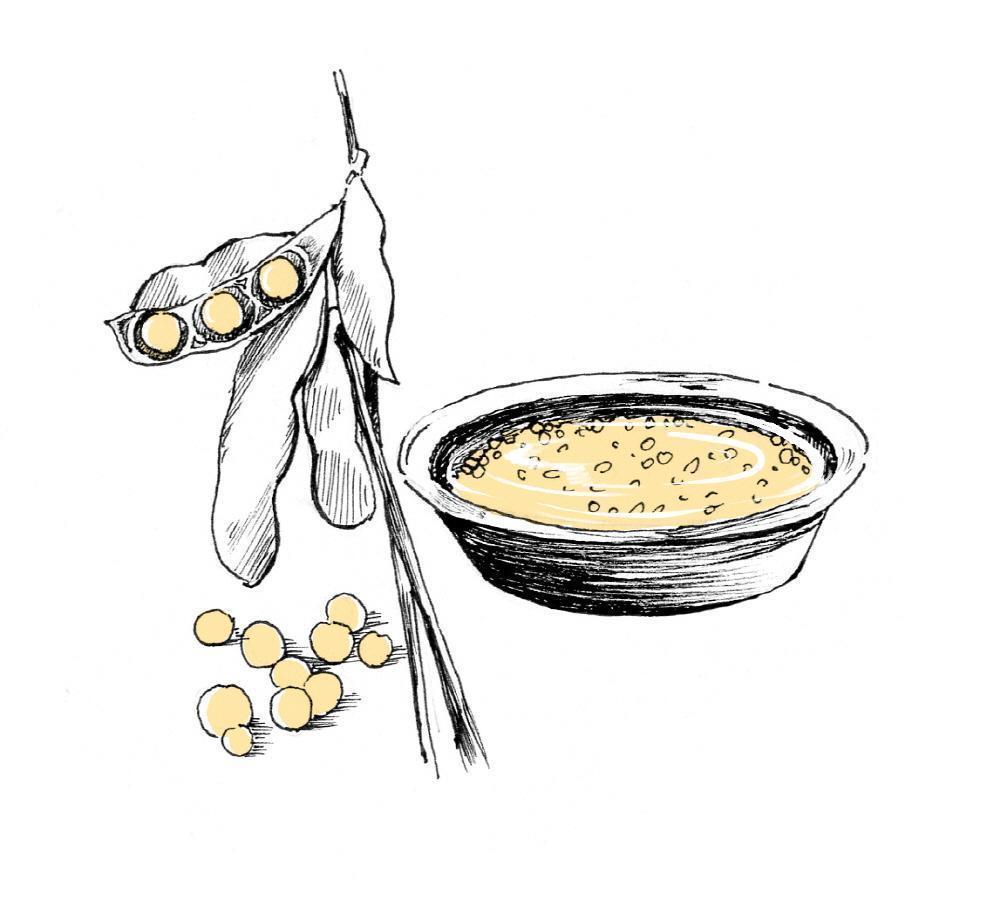

① Use yellow beans which were harvested in autumn to make fermented soybean blocks called “meju” in winter. Select beans with even color, and remove those with wormholes or rotten parts. Rinse the beans well and keep them soaked in water for about 10 hours.

② Braise the soaked beans thoroughly in a pot for 2 hours. Uncooked beans smell unpleasant and cannot be fermented properly. Well-cooked beans can be easily mashed with fingers.

③ Drain the cooked beans and pound them in a mortar into coarse bits.
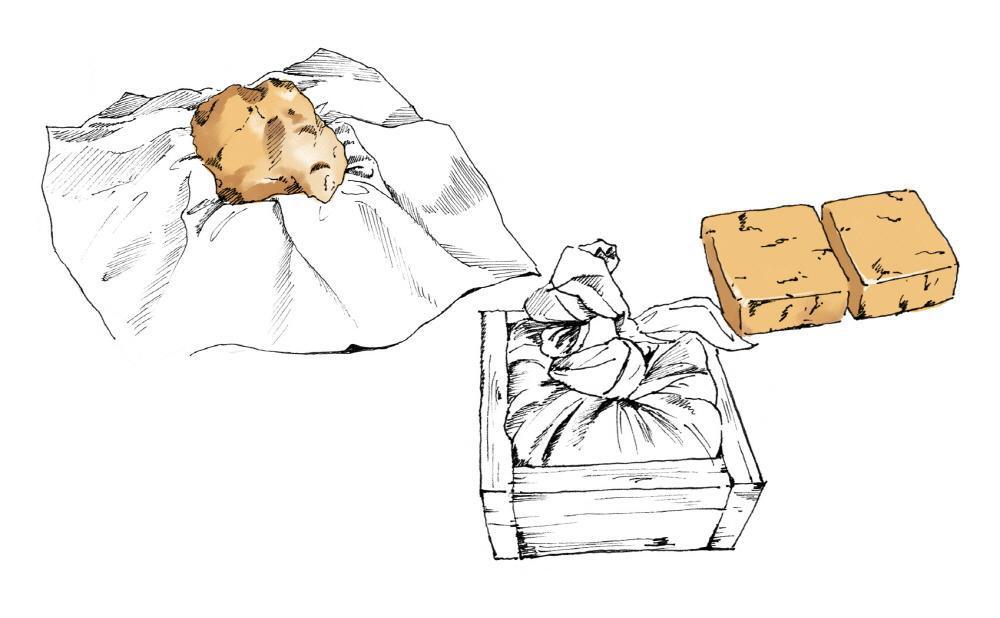

④ Put them into a mold or use your hands to make the block shape. The shape of a meju differs depending on the regions and families in Korea. When using a wooden mold, lay a cloth on the surface of the mold, pour the mashed soybeans into the mold and wrap them carefully with the cloth. Press them with even pressure for consistency in the shapes of meju.
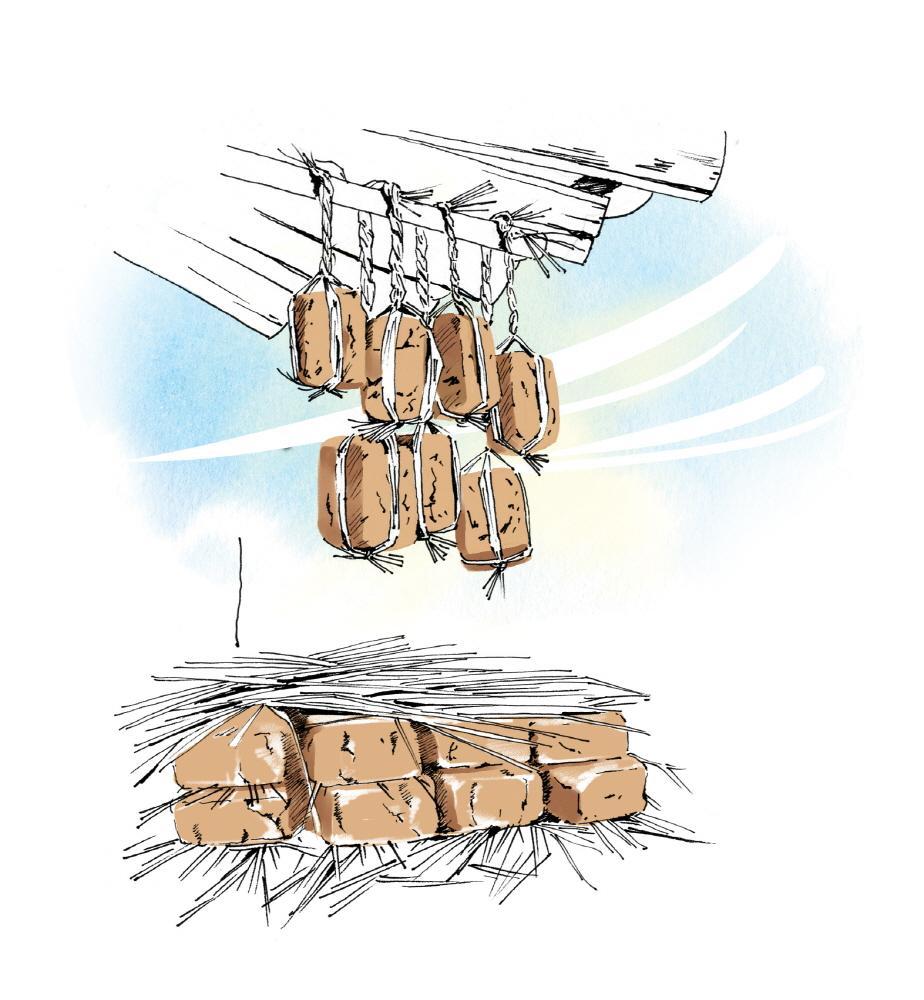

⑤ Spread straws on the floor of a room, place the meju above them to dry for 2 weeks during which 30°C should be maintained. After this, the surface of the meju will be dry and covered with bacteria. Meju should be sometimes dried outside the room to prevent growth of sundry bacteria. When the surface of the meju blocks turns yellow and red, tie them with rice straw and hang them in the room to dry during the winter.
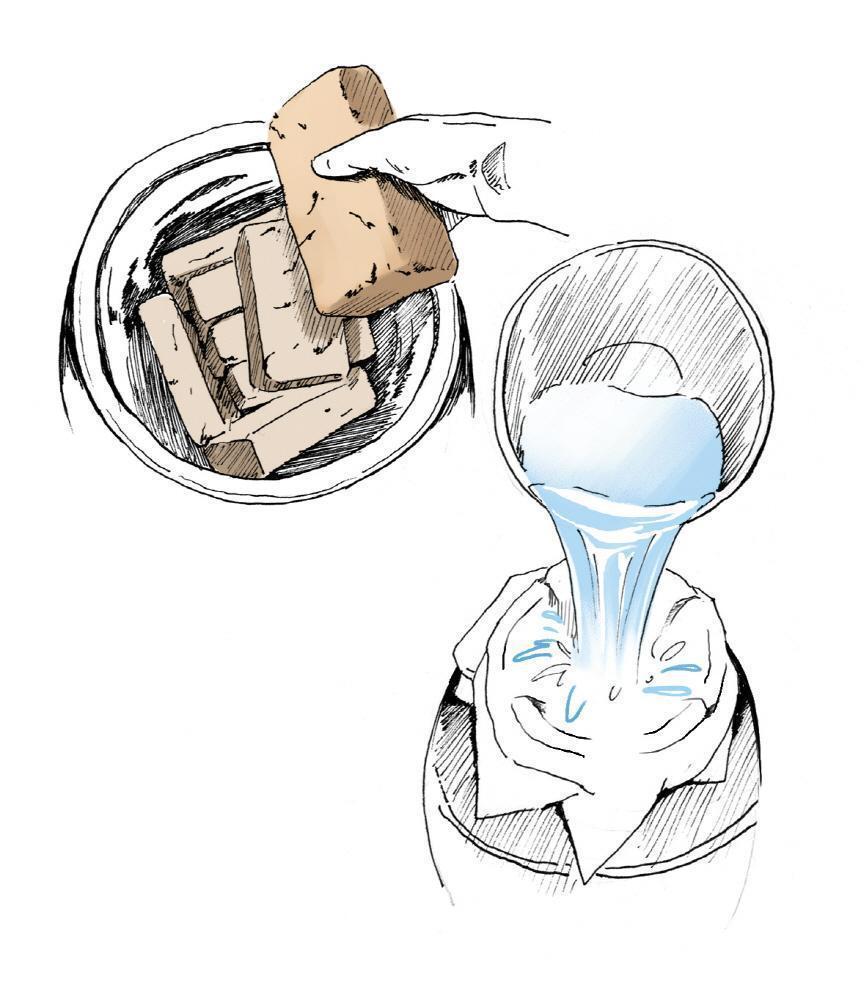

⑥ In early spring next year, take out the meju blocks, rinse them with water, and dry them in the sun thoroughly. Put the dried meju blocks into a large and opaque pottery jar, and pour brine solution, which is made by mixing water and salt in a one to one ratio, into the jar. Leave about 1cm of water from the top of the meju blocks for the right salinity.
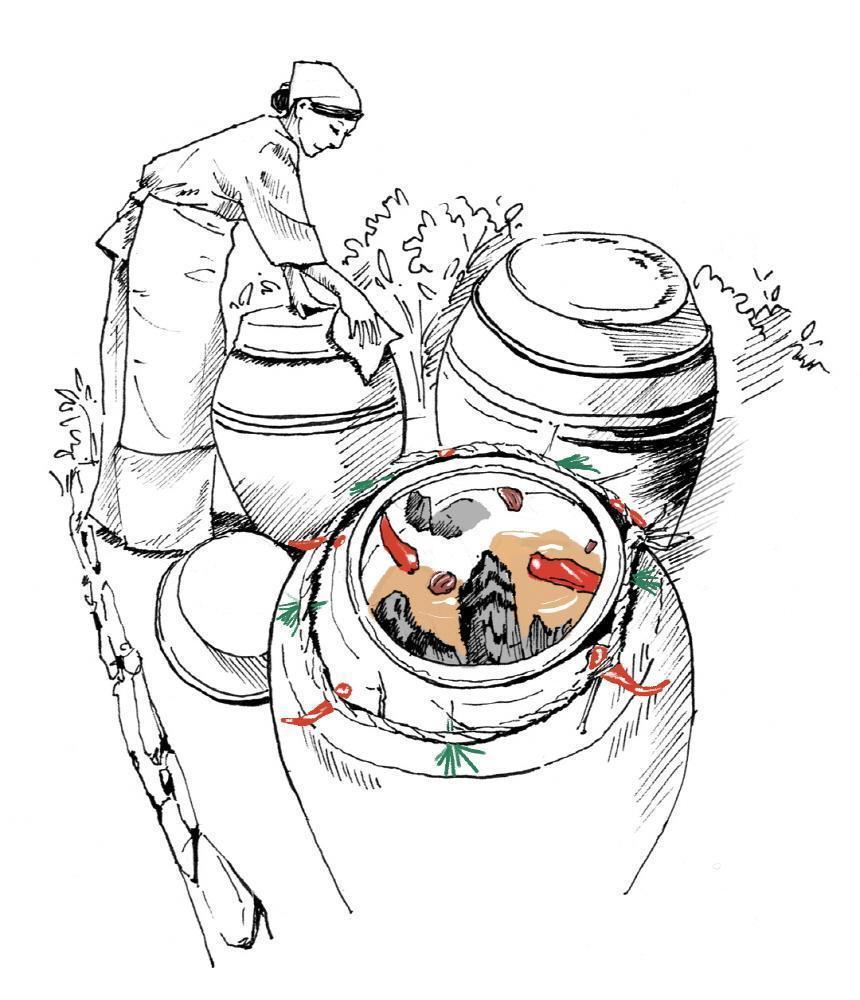

⑦ Put roasted jujube, dried red pepper, and a few heated charcoal lumps into the jar. Sprinkle some salt and put a lid on the jar for aging. Hang a straw rope loaded with red peppers and charcoal lumps around the top portion of the jar, which has the symbolic meaning of warding off evil spirits.
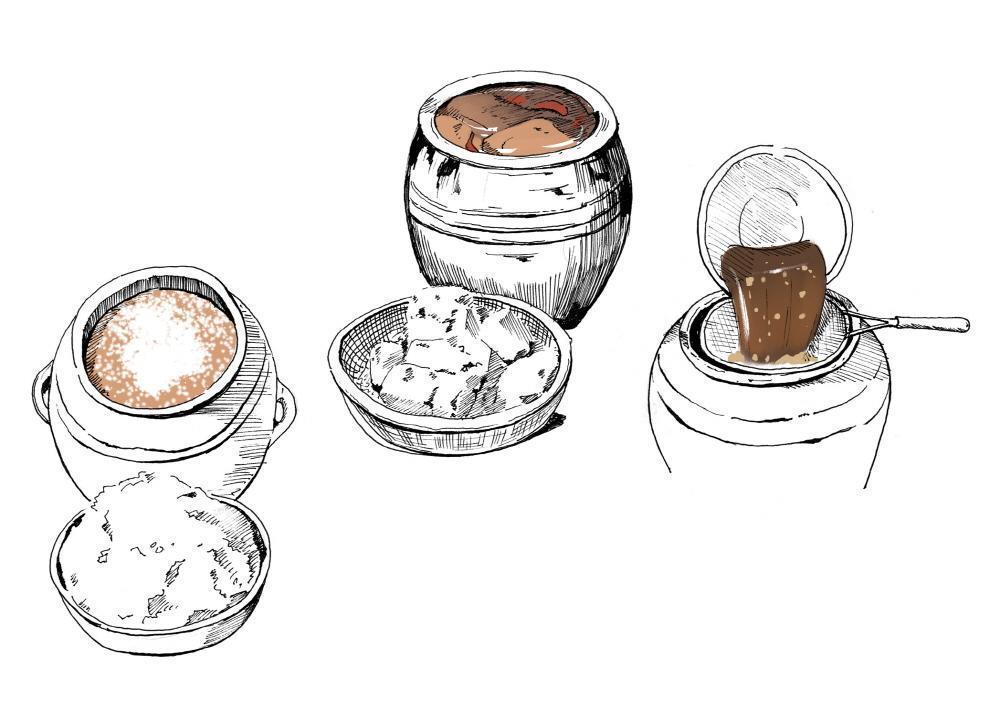

⑧ After 60 days, separate the meju blocks from the liquid, and strain the liquid through a fine meshed sieve. Put the separated meju in a pottery jar and sprinkle some salt on top of the meju. After aging, the mixture becomes the traditional Korean paste called doenjang. After boiling and aging, the strained liquid becomes the traditional Korean sauce called ganjang.
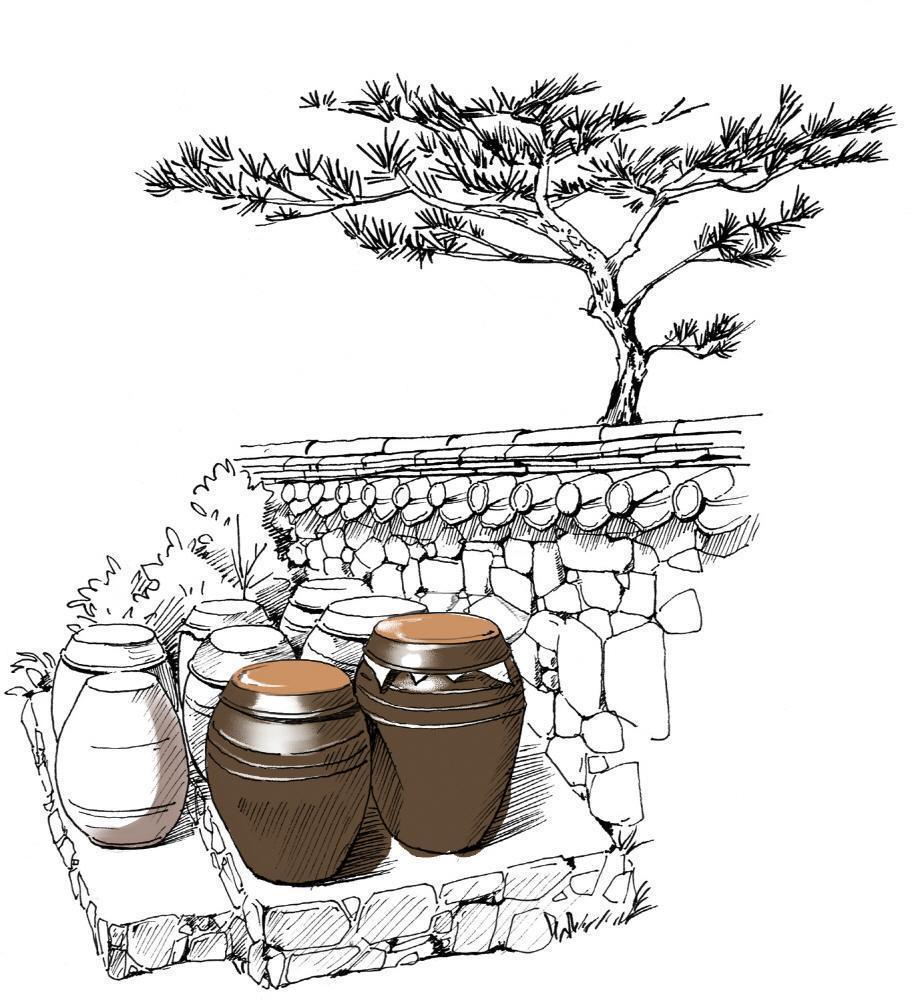

⑨ The aging process begins in around 50 days from storage of the paste or liquid in a jar. An “onggi” jar, which is called a “breathing jar” due to its fine pores, is an optimal choice for fermentation. Korean women in the past have stored pottery jars in a traditional terrace called jangdokdae where the jars can get enough sunlight and ventilation. They managed the pottery jars with great care by wiping the dirt off the jars every day and opening their lids to allow plenty of sunlight in.
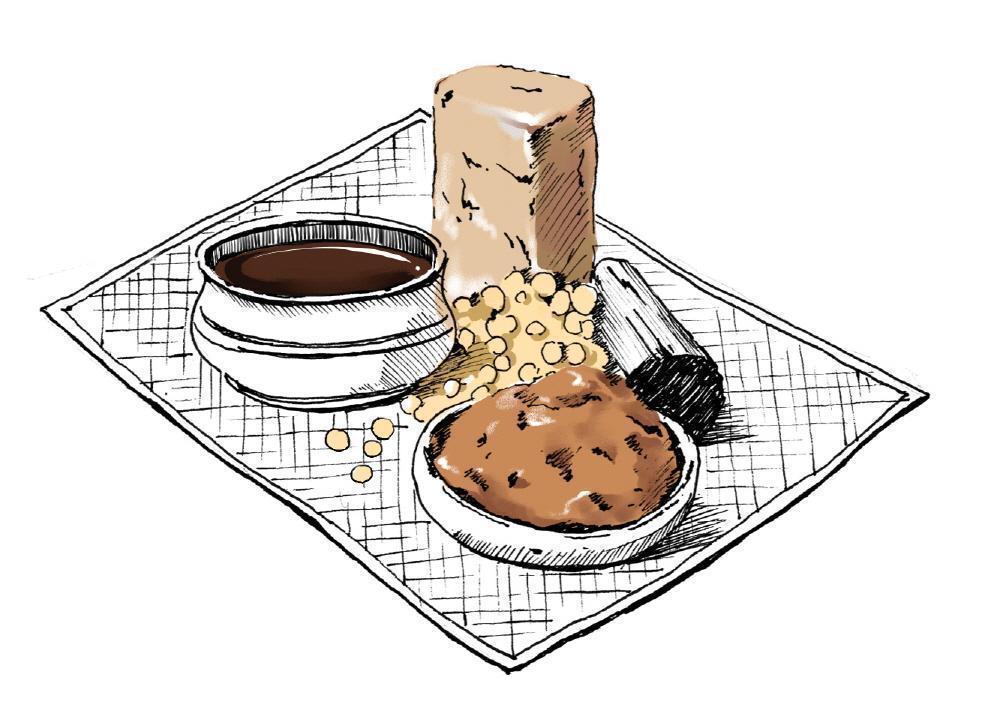

⑩ Meju made with beans is used for traditional Korean pastes and sauces like doenjang (soybean paste), ganging (soy sauce) and gochujang (red chili paste). It takes a long time and a significant amount of care to make “jang” which means traditional pastes and sauces, as well as meju. In this manner, Koreans have attached great importance to such traditional pastes and sauces. There is a saying that “A family with delicious “jang” has many blessings”
Write by Park hyeon-Suk | Photo by Lee Jong-Geun
Client KTO | Production D-gram(Hansik) ⓒdgram.co.kr


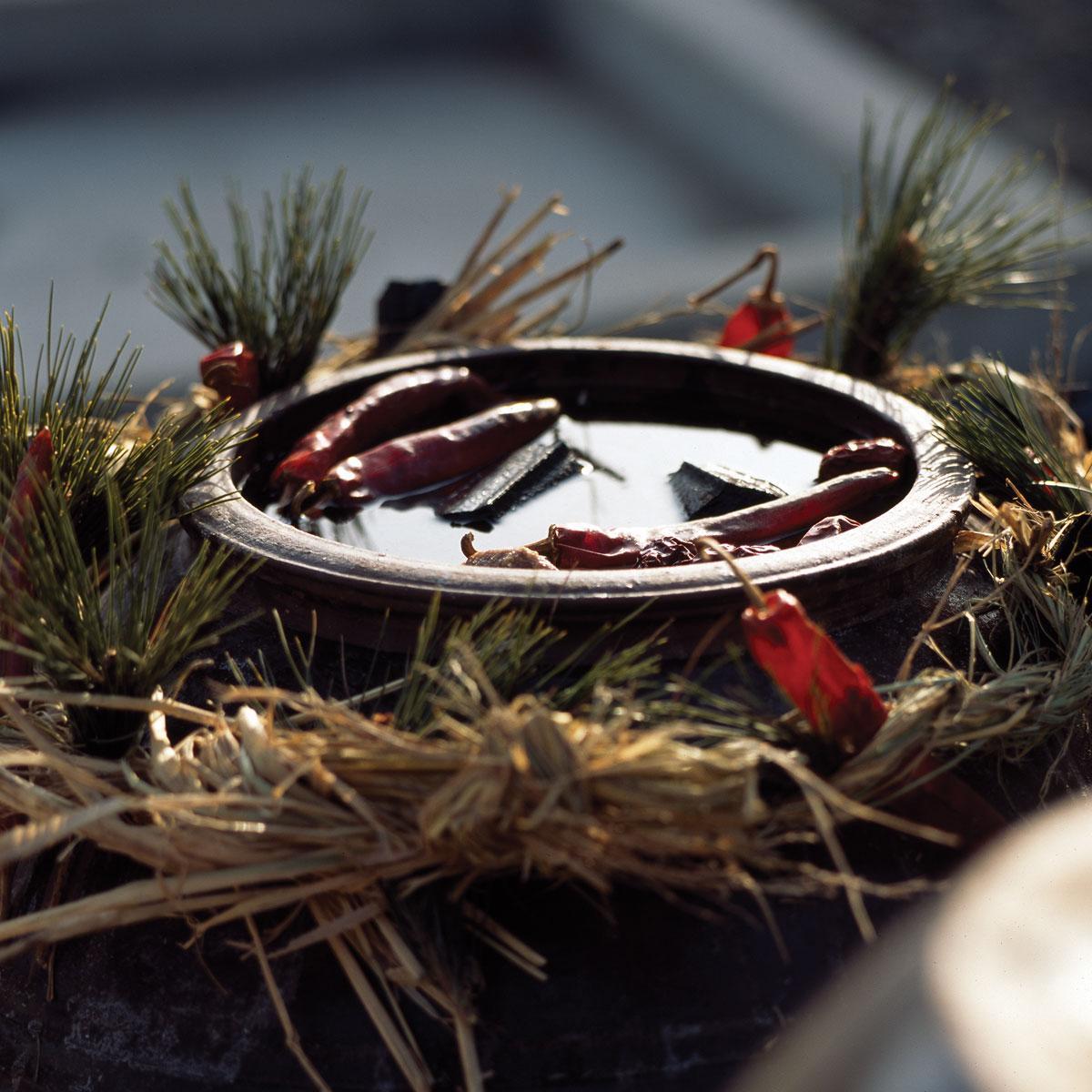
![[A ZONE] Gangnam Food Spot](https://m.dgram.co.kr/wp-content/uploads/2020/09/A존-알래스카3-특성이미지_S-218x150.jpg)
![[A ZONE] Gangnam Life Style](https://m.dgram.co.kr/wp-content/uploads/2020/09/로우클래식1-특성이미지_S-218x150.jpg)








![[A ZONE] Gangnam Food Spot](https://m.dgram.co.kr/wp-content/uploads/2020/09/A존-알래스카3-특성이미지_S-324x160.jpg)
![[A ZONE] Gangnam Life Style](https://m.dgram.co.kr/wp-content/uploads/2020/09/로우클래식1-특성이미지_S-324x160.jpg)




